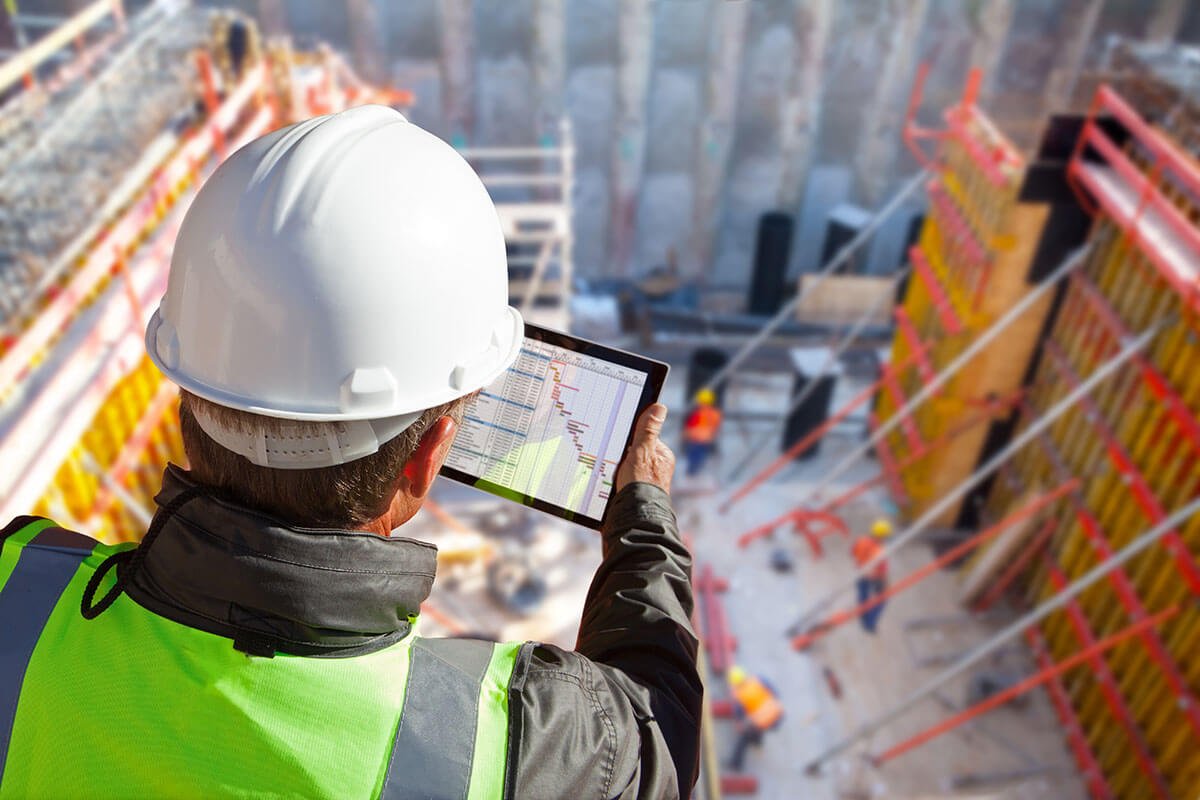IoT Technology And The Future Of The Construction Zone

With the introduction of IoT technology, a construction site can manage materials, optimize daily operations and meet deadlines. According to studies, construction zones are the most dangerous places on earth, with injuries resulting from equipment failure, falls from heights, electric shocks and trench collapse. IoT technology can help site managers reduce accidents and minimize casualties by providing real-time education and tracking of equipment.
IoT technology can improve safety
The IoT isn’t just about connected home appliances. It also improves safety in construction zones with wearable technology, which is gaining popularity among workers. Smart glasses, AR goggles, and watches all monitor personal data and report wirelessly. Workers often bring their own wearable technology into the field with them. Tech-forward construction firms have already embraced wearables for their safety and AR purposes. Wearables can help you track labour, mark hazards, and send real-time alerts to everyone in the construction zone.
IoT devices can help construction supervisors track the progress of their projects by detecting delays in materials delivery. With such information, managers can better schedule work and reduce productivity bottlenecks. Another benefit of IoT devices is that they can detect when construction materials need repair before they can be delivered. This means that construction managers can better allocate their resources to other aspects of the project. In addition to preventing costly downtime, they can also make more informed decisions about equipment rental.
Another way IoT technology can improve construction zones is by making machines autonomous. For example, autonomous Volvo trucks are already used in the Norway construction zone. This solution not only saves labor but also increases worker safety. For example, sensors can direct a crane to a particular container, and provide insights on the machine’s health. While autonomous vehicles aren’t quite ready for commercial use, they can significantly reduce labor costs and improve safety.
With IoT technology, construction managers can collect data on unsafe practices on their sites. These data can be analyzed to identify trends and implement new safety management practices. This technology can also help reduce worker injuries and accidents by detecting and documenting hazards in real time. The benefits of IoT are numerous, and onsite monitoring through IoT technology will become more common. So, get ready for an IoT revolution on the construction site.
It can improve efficiency
IoT can be used in the construction industry to help companies implement sustainable plans. Using zero-waste terminology can educate laborers on the importance of sustainability and prevent wastage. With the help of IoT, companies can monitor environmental metrics and improve their processes and equipment to prevent waste. One example of this is the integration of machines that control the process of piling and drilling. This technology can help construction companies increase their productivity and achieve their goals within a reasonable time frame.
Good resource allocation is crucial to the success of a construction project. In addition to the proper allocation of labor and equipment, the proper use of these resources is crucial to maximizing profits. As a result, human resource managers must match the right labor and equipment to specific tasks. IoT technology can help them identify high-performing workers and areas for maximum productivity. Data insights from IoT can help site managers evaluate which projects are in need of more resources.
Construction-related IoT solutions can also help in solving the challenges of theft and safety. It is difficult to monitor the entire construction site in real time, and there is always a risk of theft. IoT enabled tags can help in this case. Tags installed on equipment and materials can notify workers of their current location. This way, the construction site can be monitored more efficiently. By monitoring the current location of equipment and materials, it can reduce the risk of theft.
By identifying issues and putting data insights to good use, IoT can increase efficiency in the construction zone. In addition to reducing construction costs and delays, IoT can increase worker safety. Safety protocols have been proven to fail several times. IoT alignment can minimize risk by using real-time location tracking and movement detector chips. This information can help in predetermining worker safety. The safety of workers is one of the most important factors in a construction site.
It can reduce waste
IoT technology is an important step towards zero-waste construction zones. Sensor-equipped bins and a zero-waste mindset will help the construction industry make sustainable plans. These strategies will ensure that no waste is left behind at the site, thereby improving the overall cost efficiency of the project. Additionally, IoT can also optimize routes to disposal sites and reduce the overall volume of waste generated by construction works.
By using IoT technology in the construction zone, contractors can save a significant amount of money. It will also ensure timely delivery of new equipment and other resources. The results of this will reduce project costs and avoid the need to extend contracts. Another benefit of IoT technology is increased worker safety. The use of sensor-equipped devices will allow workers to monitor their environment and track their wellbeing. This will help the construction industry stay ahead of the game.
With IoT technology, site managers can monitor workers and the flow of materials. This will help cut down on the amount of time that workers have to wait for materials, which will decrease the overall efficiency of a project. Furthermore, site managers can deliver real-time education to employees to ensure that they are staying safe while on the job. Moreover, IoT technologies will help construction companies ensure that all workers are compliant.
IoT solutions can help construction companies keep track of the performance of their machines and implement the most efficient waste management strategies. By monitoring waste disposal bins and tracking the waste stream, they will be able to manage the flow of construction waste more efficiently. In addition to that, construction waste also has to be dealt with properly to avoid penalties. If waste management in a construction zone is not properly done, there will be a significant amount of environmental degradation and dumping of material.
It can improve productivity
Using IoT technologies to track workers’ activities and prevent workplace accidents are important aspects of smart construction. For instance, wearable sensors can keep managers informed of worker productivity, and data analytics tools can analyze historical data to predict potential environmental damage and respond to on-site accidents. With so much data to work with, IoT connectivity empowers construction sites to avoid issues and increase productivity while cutting down on accident management costs.
IoT technology can provide visibility across the jobsite with real-time data and analytics. These data can identify unproductive areas and determine whether they’re productive. The software also can provide data to subcontractors to evaluate their productivity on a daily basis. The company can also use the data to predict how much money a construction project will cost before completion. Ultimately, IoT can boost productivity across the construction industry.
With these data, IoT technology can help construction businesses reduce workplace injuries. For example, smart helmets and wearable devices can monitor workers’ brainwaves and alert workers to approaching vehicles. Another major benefit of IoT technology is that construction managers can provide real-time education and training to workers. It can even help them reduce their overall fuel costs. A construction site can be dangerous enough without having to deal with the consequences of human error and human errors.
Using IoT can enhance creativity, safety, efficiency, and more. With the use of digital tools and wearables, IoT technology can take the construction zone to a new level. With IoT technology, construction companies can improve the productivity of their teams and meet goals within reasonable timeframes. So what exactly can IoT technology do for construction companies? A construction site is a high-risk environment and IoT can help with this problem.
It can improve cost
IoT devices can detect the location and speed of construction vehicles, allowing construction managers to be aware of any potential delays. They can also track the condition of vehicles, so that maintenance teams are notified of any problems as soon as they happen. In addition, IoT systems can monitor fuel usage, which can account for 50% of a machine’s operating costs. These insights help project managers coordinate operations more efficiently and reduce costs.
The Internet of Things has penetrated almost every aspect of our lives, from smartphones to appliances. But the technology is slowly making its way into the construction business. IoT can improve cost efficiency and safety on construction sites. It can also increase operational efficiency and reduce physical waste. Low-power sensors can be deployed in construction zones at all stages of the project, from planning to post-construction operations. By monitoring the status of equipment and workers, managers can ensure a smooth project completion, and improve safety and financial control.
The use of IoT technology in construction can help contractors automate their operations and increase accuracy. Wearable devices can collect information about workers and job sites in real time. Wearable technology also helps contractors and project managers understand how their operations are going, and where they are located. Traffic safety equipment can also be embedded with IoT technology. The technology can also be used to improve road safety and save money.
IoT also helps construction companies improve productivity and cost. By collecting data from IoT-connected sensors, a construction company can identify zones where workers are more productive than others. With this technology, a construction project manager can review data to determine where productivity issues are, and determine whether they require additional resources to improve productivity. By automating and monitoring work, IoT technology can improve productivity and cut costs in construction.






